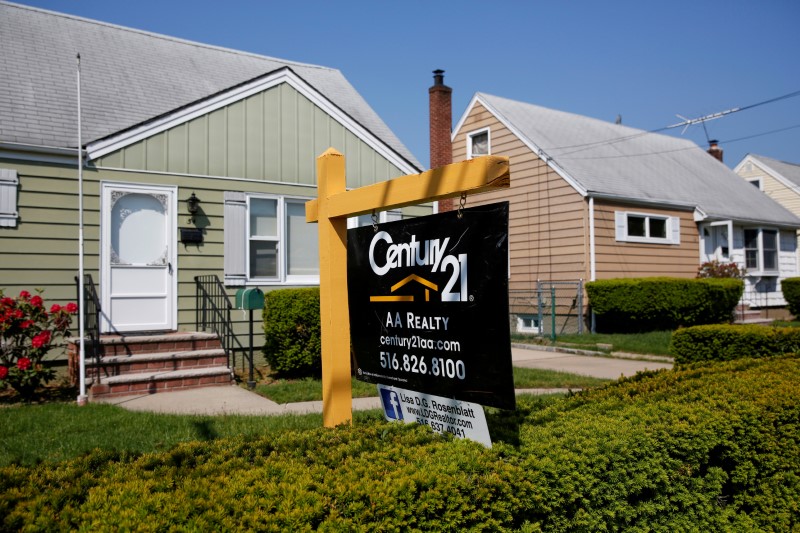
Take a rising numbers of store vacancies, add in a growing demand for shorter leases, and you have an ideal situation for Appear Here, a company using its online marketplace to disrupt how landlords find new tenants.
London-based Appear Here moved into the New York market one year ago and has since seen a more than 50 percent increase in demand globally from brands looking to book a space via its platform. Later this year, Appear Here will roll out to California, with its eyes also set on moving into U.S. malls.
Its mission is simple: To help fill a sea of empty stores, as retailers and restaurant chains like Bon-Ton, Subway, GNC and Toys R Us shutter hundreds of locations.
“It’s inevitable there will be a lot more pop-up shops, and the lines between a pop-up shop and a store will blur. It’s just a shorter-term, more flexible lease, and a smaller-format store,” Fifth Wall co-founder Brendan Wallace told CNBC. His firm made a “significant,” but unspecified, investment in Appear Here last year.
Using Appear Here’s website, a potential tenant can browse available properties by location — East Village or SoHo in New York, for example — and view the rent price per day. The process bypasses the traditional brokerage firms that often get involved in these deals as an intermediary between landlord and tenant. A transaction that could sometimes take weeks now takes minutes.
“It’s still an old-school industry,” Appear Here Chief Marketing Officer Elizabeth Layne told CNBC about much of the retail real estate sector today. “There is an understanding that we have a lot of vacant space, brands are changing, and people are talking more about Bonobos” and other e-commerce players growing in bricks and mortar, she said.
Even in urban shopping destinations like New York and Los Angeles, there’s a glut of empty storefronts on the market, as rents have skyrocketed too high for many retailers to fork up. Unprofitable businesses meanwhile are moving out. More and more, tenants are in a position of power over the landlords when negotiating their way into a deal.
“Maybe we just really hit it right with timing. I think landlords are scared,” Layne said. “They’re not sure how they can change, and we offer a solution right there.”
Appear Here’s success stories include pop-up shops for Kanye West, Spotify, Netflix and street brand Supreme. The platform has also helped lease space within other retail locations, like Topshop, to brands looking for exposure within a niche setting. According to Layne, department store chains are even starting to reach out to Appear Here with hopes of filling unused space within their stores. “We are in talks with a few,” she said.
Also unique to Appear Here is its relationship with Fifth Wall, a California-based venture capital firm focused on real estate technologies.
The firm’s investments have helped fuel Appear Here’s U.S. expansion. It also set Appear Here up with Fifth Wall’s other strategic partners including real estate investment trust and U.S. mall owner Macerich, commercial real estate services firm CBRE and investment management company Hines.
When Fifth Wall teamed up with Appear Here in 2017, tenants were pursuing lease terms that were around five years on average, compared with 20 years in 1991, the firm said. Retailers looking for long-term deals is becoming a thing of the past.
“Appear Here is positioned to newly list millions of retail square feet in supply across the U.S. market,” Fifth Wall principal Roelof Opperman wrote in a blog post. To date, Appear Here has listed nearly 2 million square feet of space globally.
“Anybody who owns retail real estate better realize they need to be more creative,” Fifth Wall’s Wallace added. “The era of the Gap’s and the 1,500 store retailers is over, and it might never come back.”
Looking to build a successful pop-up platform of their own, retailers and landlords alike have rolled out concepts to bring in retailers for short periods of time.
Mall owner Simon Property Group has “The Edit” at Roosevelt Field Mall in New York, which currently houses a slew of international brands. GGP has “FOMO,” a pop-up food hall. And shopping center owner Kimco has taken 13 of its properties and is trialing pop-up shops in those open-air spaces.
Department store chain Macy’s earlier this year announced it would launch pint-sized pop-up marketplaces in a handful of its stores, with the goal of driving traffic and incubating young brands.
“Instead of scaling quickly, we’re scaling smarter,” Layne said about Appear Here and its expansion plans for 2018. “There’s velocity on both sides of the marketplace. … We have to do something with broken spaces.”

